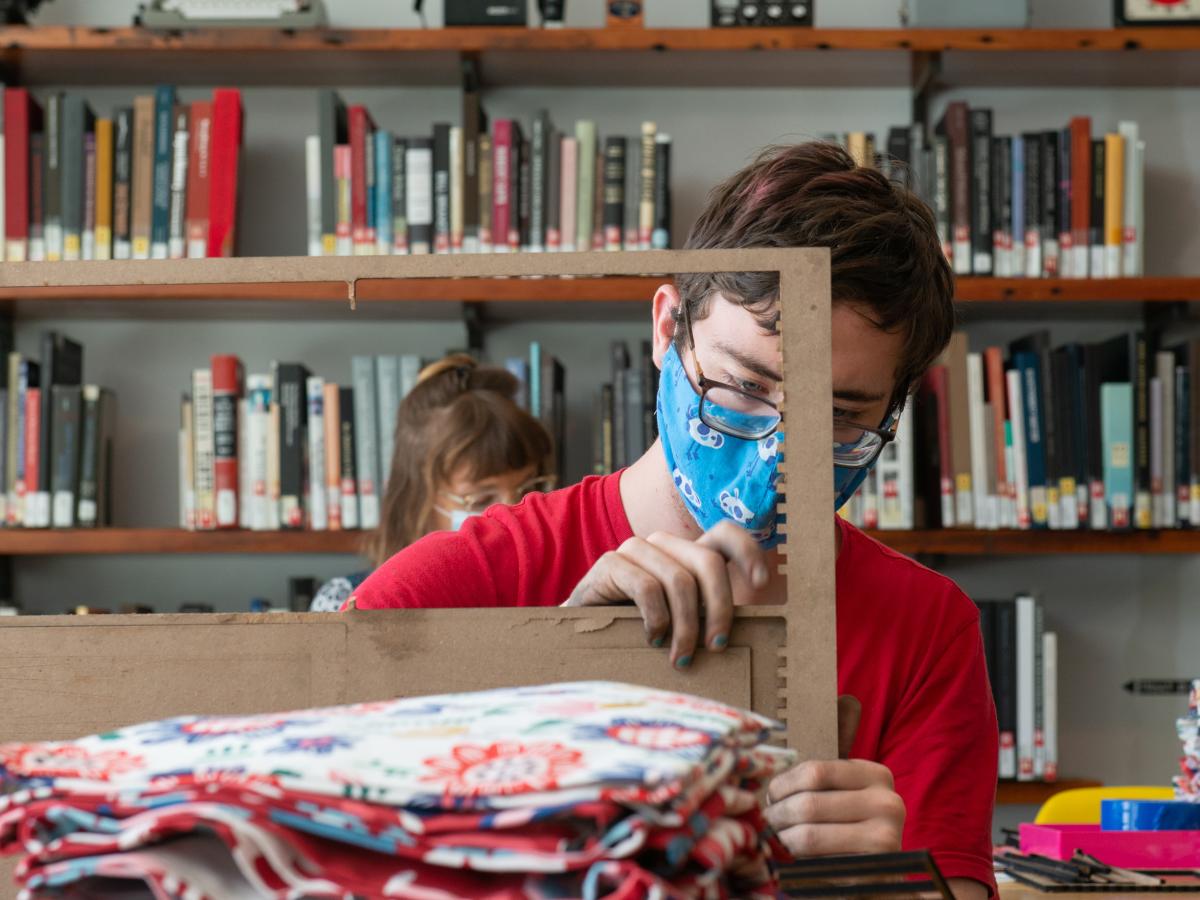Olin’s third Creative-in-Reference invites students to weave a new design narrative
Arlene Keizer, PhD, is almost tailor-made for Olin’s third and final Sketch Model Creative-In-Reference year-long position. “The Sketch Model call for projects intended ‘to awaken the political and cultural contexts for technology’ seemed to be speaking directly to me,” she says.
In her 25 years of teaching at universities, Keizer has developed courses and programs focused on literature, visual and material culture, and social justice. She’s taught classes on global narratives of liberation, on African American writers’ use of the personal essay as a practice of freedom, and on the intersections between critical race theory, literature, and visual culture.
Keizer began her writing life as a literary critic and poet. She taught herself to be an analyst of visual culture, and incorporated other forms of “making” into her life outside of academia through forays into welding, knitting, and weaving.
Arlene Keizer, PhD, is almost tailor-made for Olin’s third and final Sketch Model Creative-In-Reference year-long position. “The Sketch Model call for projects intended ‘to awaken the political and cultural contexts for technology’ seemed to be speaking directly to me,” she says.
In her 25 years of teaching at universities, Keizer has developed courses and programs focused on literature, visual and material culture, and social justice. She’s taught classes on global narratives of liberation, on African American writers’ use of the personal essay as a practice of freedom, and on the intersections between critical race theory, literature, and visual culture.
Keizer began her writing life as a literary critic and poet. She taught herself to be an analyst of visual culture, and incorporated other forms of “making” into her life outside of academia through forays into welding, knitting, and weaving.
At Olin, her class, Weaving the Future, invites students to explore what she calls “new ideologies of making,” a set of principles and values by which decisions about design, fabrication, and use are made.
“These often unspoken ideas and values establish the conditions of possibility for making within a culture,” she says. “Ideologies of making determine how designers/engineers within any given cultural system will set priorities for imagining and crafting objects and processes.”
The theme underscoring all of Keizer’s work is “freedom.” Weaving the Future is about imagining and creating design ideologies that are oriented toward freedom for as many individuals and communities as possible. In the course, students are reading and discussing essays about theory and practice by artists, designers, philosophers, and creative writers; thinking together about how one extrapolates an ideology of making from the stories and products of a culture; considering their own design ideologies and how they might change the objects they make or the processes used.
And they get to do actual weaving, too.
“We’re using hand-weaving as a shared practice for considering the choice of materials and interaction with materials as forms of expression,” says Keizer.
The plan had been for students to work together on a floor loom in the library, on individual projects and on a group weaving project. Because of the pandemic, each student has been given a simpler loom, called a rigid-heddle loom, to use at home.
Keizer’s residency gives students the chance to step far outside of typical engineering subjects to look at their studies through a different lens.
They’ll be learning virtually alongside Keizer and a number of guest artists. Weaving artist Christy Matson will discuss the technological development of weaving and her own weaving practice, which incorporates sound and computer technologies. Another visitor is Cynthia Alberto, founder and director of The Weaving Hand, an organization that teaches and promotes indigenous weaving practices and sustainable design. The African American photographer Sheila Pree Bright will talk about her collaborative photo project, Young Americans, as well as other aspects of her work.
“I’m delighted with Weaving the Future so far!” says Keizer. “I was surprised at the number of students who signed up for the class; it’s always a pleasure to feel that what you’re offering is of interest to students.”
This is her first foray into online teaching, and she was apprehensive about it at first. “But we’re having intense, complex discussions where we run over time because we can’t fit all we have to say into the allotted class time,” she says.
“It’s a gift when students engage with the course readings and exercises with enthusiasm, curiosity, and critical acumen.”
* The creative-in-reference at Olin College is a position established as part of a multistep $900,000 grant from the Andrew W. Mellon Foundation designed to better integrate the arts and humanities within a STEM education. The term “creative-in-reference” was developed at Olin to signify a variation on the traditional residency model; one in which residents foster a more community-facing role, emphasizing inherently social and collaborative projects.
